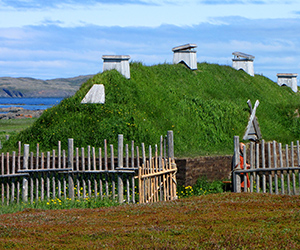CANADA HISTORY
Canada Goes to War

In 1914, when the First World War erupted, Canada was still a young nation, just 47 years old, with a population slightly over seven million. The country was undergoing rapid transformation due to a mix of internal developments and external pressures. The preceding decades had seen tremendous immigration, industrialization, and a gradual shift from rural to urban living. These changes, coupled with Canada’s limited military experience and modest national resources, placed the nation in a precarious position as it entered the global conflict. Yet, despite these challenges, Canada's role in the war would significantly shape its identity, laying the foundation for the country’s evolving sense of nationhood and its place on the world stage.
Immigration and Ethnic Tensions
The years leading up to the First World War saw Canada undergo profound demographic changes. Government policies had encouraged mass immigration, particularly to settle the western prairies, and by 1914, the population had increased by 40 percent compared to the turn of the century. Over one million of these new arrivals were British immigrants, drawn by the promise of free or inexpensive land. However, not all newcomers were welcomed with open arms, and the influx of non-British immigrants stoked ethnic tensions. There were widespread concerns, particularly among Anglo-Saxon Canadians, that these immigrants posed a threat to the dominant British culture. This anxiety about the dilution of Anglo-Saxon values and traditions was exacerbated by the arrival of Eastern Europeans, particularly Ukrainians, Poles, and Jews, who were seen as culturally and racially distinct from the British settlers.
In this period, Canadian society was deeply divided along ethnic lines. There was a clear social hierarchy, with British and French Canadians at the top and newer, non-English-speaking immigrants often regarded with suspicion and hostility. These divisions only deepened with the onset of the war, as many of these immigrants were from countries that were now enemies of the British Empire. German, Austrian, and Hungarian communities in Canada, for instance, faced intense suspicion, and many immigrants from these regions were interned in camps as "enemy aliens." While the war would eventually bring a greater sense of unity to Canada, the early years of the 20th century were marked by ethnic strife and the struggle to define what it meant to be Canadian.
Canada’s Economic Landscape in 1914
Economically, Canada was still a country largely driven by agriculture, though industrialization was rapidly gaining ground. The fertile lands of the prairies had attracted many immigrants to take up farming, particularly in Manitoba, Saskatchewan, and Alberta, which had become the breadbasket of the country. However, the economic picture was not universally bright. Urbanization was beginning to take hold, but no Canadian city had yet reached a population of half a million, with Montreal being the largest at the time. Toronto and Vancouver were also growing, but the shift from rural to urban living was still in its early stages.
More troubling was the fact that unemployment was on the rise, largely due to a depression that had begun in 1913. Canada’s reliance on foreign investment, particularly from Britain, meant that any downturn in the British economy reverberated strongly in Canada. At the same time, the nation’s railway infrastructure, which had linked the country from east to west, had been completed, offering hope for future growth. However, the economic outlook remained uncertain, with manufacturing industries under threat and foreign investment in decline. It would take the advent of war to spark a significant recovery, as demand for Canadian resources and manufactured goods soared once the conflict began.
A Small and Unprepared Military
Militarily, Canada was ill-prepared for the type of large-scale conflict that was engulfing Europe. The country had a small standing army of just 3,110 men—a mere fraction of the forces that the European powers could muster. While some 65,000 to 70,000 Canadians had received basic training in local militia units, these soldiers were poorly equipped and lacked modern weapons. The country’s stock of serviceable rifles and artillery was pitifully small, and there was a serious shortage of trained officers. The navy was in similarly dire straits, consisting of just two aging cruisers, one of which was barely seaworthy by 1914. With a total naval strength of only 350 men, Canada could hardly claim to be a military power.
Efforts had been made to modernize Canada’s military in the years leading up to the war, but these were limited. Sir Frederick Borden, the Minister of Defence at the time, had overseen the construction of new armouries and rifle ranges, as well as the establishment of the military base at Petawawa. Additionally, a small general staff had been created, and crucially, a War Book had been developed—a detailed plan outlining how various government departments would respond in the event of war. While these were important steps, they were far from sufficient to ready the country for the demands of a global conflict.
Despite these limitations, Canada had some experience in overseas military engagements. The country had sent a small contingent to fight in the Boer War in South Africa at the turn of the century, which had been Canada’s first significant contribution to a foreign conflict. This experience helped prepare a few officers and soldiers for the kind of warfare they would face in Europe, but the scale of the First World War would be orders of magnitude greater.
The Importance of the War Book and Mobilization Plans
Although Canada’s military resources were limited, one critical aspect of preparation was the creation of the War Book. This document was a comprehensive plan that outlined how every government department would function in the event of hostilities. The War Book played a pivotal role in ensuring that Canada could respond quickly to the demands of the war effort. Mobilization arrangements were also put in place, outlining how soldiers would be called up, how resources would be allocated, and how industries could be repurposed for wartime production.
The existence of the War Book demonstrated that, despite its relative inexperience, the Canadian government understood the importance of preparedness. It also reflected the growing importance of the federal government in national affairs. The War Book became the blueprint for the quick mobilization of Canada’s Canadian Expeditionary Force (CEF), which would grow from 25,000 men, as initially promised, to half a million by the war’s end. This rapid expansion would transform Canada from a militarily insignificant country to one of the key players on the Western Front.
A Nation Transformed by War
As war broke out in August 1914, Canada’s response was swift. The early months of the conflict were defined by overwhelming enthusiasm for enlistment, as tens of thousands of men from all over the country flocked to recruiting offices. By the end of 1914, over 59,000 Canadians had volunteered for service, far exceeding the initial call for 25,000 men. This wave of patriotism was particularly strong among British immigrants, who still felt deep loyalty to the Empire, but it also drew in thousands of Canadians from all walks of life, eager to serve their country and participate in what many believed would be a short, victorious war.
Over the next four years, the war would have a profound impact on Canada’s economy, society, and politics. The country rapidly transitioned from a peacetime economy to one that was fully geared toward supporting the war effort. Factories that had once produced civilian goods were converted to manufacture weapons, ammunition, and other military supplies. The government introduced new taxes and launched war bonds to finance the war, marking the beginning of a more interventionist role for the federal government in the national economy.
On the home front, women began to play a more prominent role in the workforce, taking on jobs that had traditionally been reserved for men. This shift, though temporary, began to change social attitudes about gender roles and laid the groundwork for the women’s suffrage movement, which would gain momentum after the war. Politically, the war created new divisions, particularly over the issue of conscription, which led to a deep and lasting rift between English- and French-speaking Canadians.
Conclusion: Canada on the Eve of War
In 1914, Canada was a nation still finding its way. Its young and inexperienced government, diverse population, and unprepared military all seemed to make the country ill-suited to the challenges of global conflict. Yet, by the end of the war, Canada had proven itself on the world stage, not only through its contributions to the Allied victory but also by emerging as a more unified and independent nation. The First World War was a crucible that forged Canada’s national identity, setting the stage for its future role as a respected member of the international community. The economic, political, and social transformations that occurred during the war years would reverberate throughout the 20th century, shaping Canada into the modern nation it is today.
Cite Article : www.canadahistory.com/sections/documents




